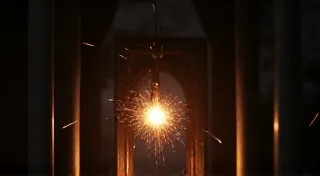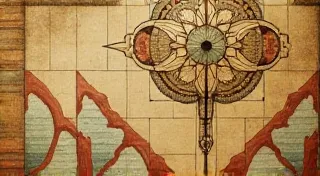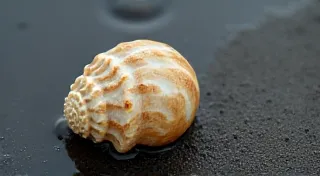The Cartridge's Lament: Understanding Ribbon Degradation and Preservation
There's a particular melancholy that clings to antique typewriters, a subtle weight of history and the ghosts of countless stories typed upon them. But it’s not just the chipped paint or the sticky keys that evoke this feeling. It's often the ribbon – that fragile, vital organ – succumbing to the inevitable march of time. The faintest smudge on a treasured letter, the ghostly grey where bold black once lived; these are the visual laments of a cartridge resigned to the ravages of degradation. To understand ribbon decay is to understand a key challenge in typewriter restoration and a vital step in preserving these beautiful machines and the legacy they hold.
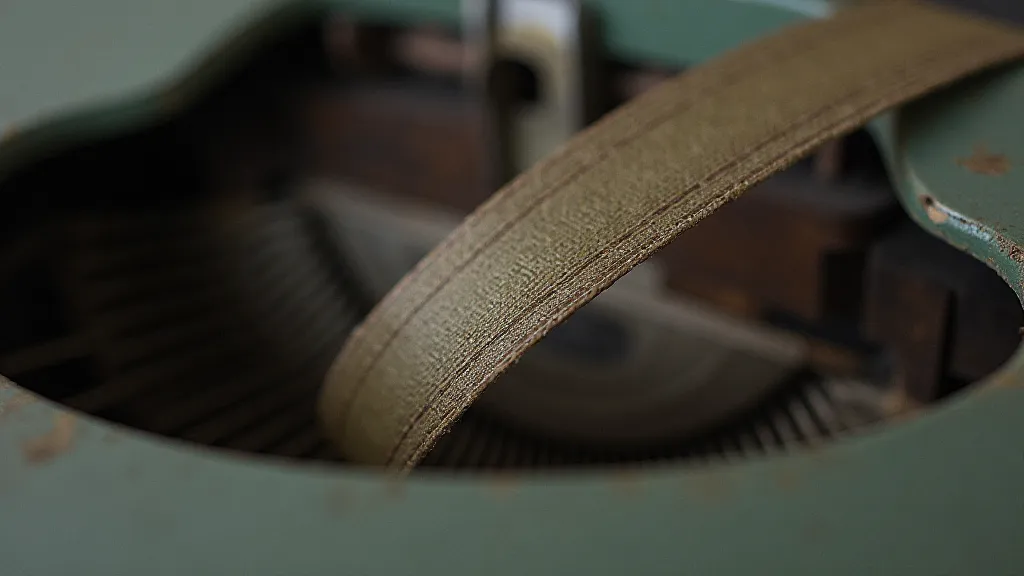
A Chemical History: The Science of Decay
Early typewriter ribbons weren’t the sophisticated, pigmented polymers we’re familiar with today. They were often made from lengths of loosely woven silk or cotton, coated with a solution of dyes—often aniline dyes—in a drying agent like gelatin. These dyes, while vibrant when fresh, were notoriously unstable. Exposure to light, heat, and oxygen initiated a series of chemical reactions. Aniline dyes, in particular, are susceptible to oxidation, a process that breaks down the dye molecules, causing the color to fade.
Think about the colors prevalent in early advertising: strong reds, yellows, and blues. These were the colors easily produced with aniline dyes. But their beauty was fleeting. The same instability that made them so striking also condemned them to a relatively short lifespan. Later ribbons shifted to nylon or rayon, improving durability but still vulnerable to the same environmental factors. Even the 'durable' ribbons of the mid-20th century aren't immune to the passage of time, though the degradation is often slower.
I recall my grandfather, a meticulous accountant, using a 1938 Underwood. The ribbon was a faded ochre when I first encountered it as a child. He'd always kept it protected in a drawer, but even that simple act of preservation couldn’t entirely halt the slow process of decay. It wasn’t just about the color, either. The drying agent would also break down, making the ribbon brittle and prone to shattering, particularly when trying to advance it. The intricacies of such antique mechanisms can be truly fascinating—it's almost like exploring a labyrinth of springs!
Environmental Enemies: Light, Heat, and Humidity
The primary culprits in ribbon degradation are readily available in any environment. Light, especially ultraviolet light, accelerates oxidation. Heat speeds up chemical reactions overall. And humidity fosters the growth of mold and mildew, which can further damage the ribbon's fibers. Consider the storage conditions of many typewriters over the decades. They weren't always treasured artifacts; often, they were left in attics, basements, or dusty offices – environments perfectly suited to fostering decay.
The stories a typewriter holds aren’t always joyful. Sometimes, they tell of neglect, abandonment, and the relentless passage of time. Seeing a faded ribbon isn’t just about recognizing material decay; it’s about acknowledging the layers of history it represents.
Preservation Techniques: A Labor of Love
While reversing degradation is largely impossible, several techniques can significantly slow it down and even stabilize a weakened ribbon. The first and most important step is proper storage. Wrap ribbons in acid-free paper and store them in a cool, dark, and dry place. Avoid direct sunlight and extreme temperature fluctuations. Ideally, a climate-controlled environment is best.
Consider archival-quality sleeves or boxes. These provide an extra layer of protection against light, dust, and humidity. For ribbons that are particularly fragile, handling them with gloved hands minimizes the risk of damage from oils and acids on your skin. A digital scan is also an invaluable safeguard – preserving the written content regardless of the ribbon’s future condition.
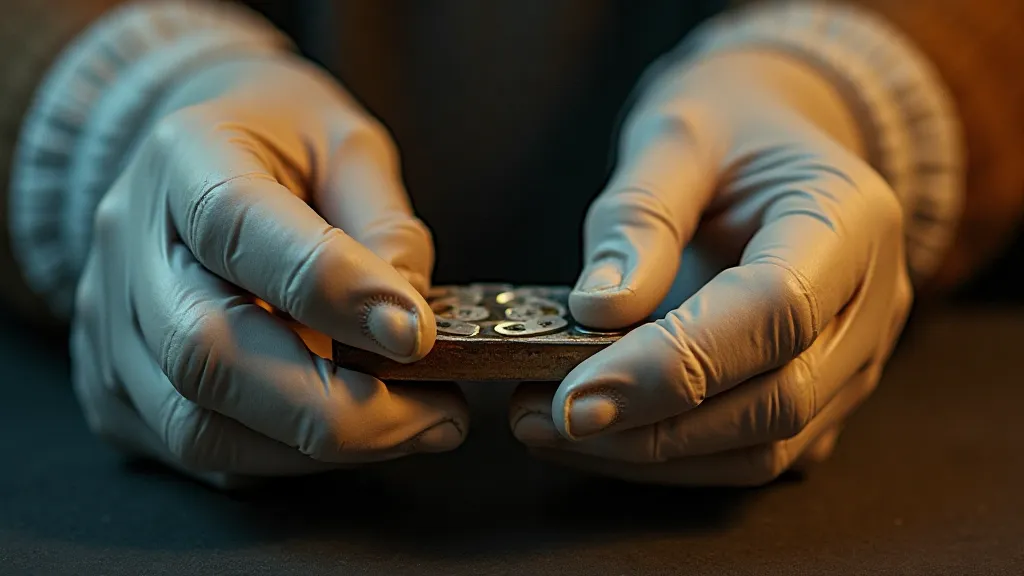
Restoration Attempts: A Delicate Balance
Directly restoring faded ink is a tricky proposition. Aggressive attempts to "revive" the color often result in more damage. However, a gentle process of consolidation and stabilization can sometimes improve the appearance. This typically involves carefully applying a very dilute solution of archival-quality adhesive to the ribbon’s surface. This strengthens the fibers and can slightly darken the remaining pigment, creating the illusion of increased density. This should only be attempted by experienced restorers.
Another approach, though more radical, involves carefully transferring the text to a fresh ribbon. This requires a skilled hand and a steady typewriter – but it allows the content to be preserved while leaving the original ribbon as a historical artifact. It's akin to a scribe painstakingly copying a fragile manuscript. The melodic hum of a vintage typewriter in operation is a truly unique and captivating experience—almost like listening to the typewriter’s aria.
Beyond the Physical: The Emotional Weight
Restoring antique typewriters isn’t just about fixing mechanical issues or reviving faded ink. It’s about connecting with the human stories embedded within the machine. Each ribbon represents a testament to communication, creativity, and human endeavor. The gentle fading of the ink is a poignant reminder of time’s relentless march, but also a symbol of resilience—a testament to the words that persevered even as the physical carrier weakened.
I remember finding a letter typewritten on a severely faded ribbon during a recent estate sale. The letter, a simple note from a mother to her son, was filled with mundane details – a request for groceries, a reminder to check the weather. Yet, reading those words, faintly visible on the aging ribbon, felt profoundly moving. It was a tangible link to a past life, a whispered echo of a human connection.

Collecting and Conservation: A Shared Responsibility
For collectors of antique typewriters, ribbon preservation is a vital aspect of overall conservation. Understanding the science of degradation and implementing preventative measures is crucial for maintaining the long-term value and historical significance of these machines. Sharing knowledge and best practices within the collecting community is equally important. It’s a fascinating field, and sourcing parts can be a unique challenge—the work of a true keysmith's reverie.
The allure of a manual typewriter isn't just about mechanics; it's about the human connection to the words created on it. This can be a profound realization—almost the page’s echo of a time when communication felt more personal and deliberate.
The ongoing preservation efforts are a testament to the value placed on these historic machines. Each carefully stored ribbon represents a link to the past, a whisper of voices long gone.
Moreover, understanding the psychological impact of using a manual machine adds another layer of appreciation for these artifacts. The deliberate effort required, the physical connection to the writing process, fosters a unique sense of engagement and contemplation.
The ongoing efforts to conserve these relics are not simply about preserving machinery; they are about safeguarding memories, stories, and the human spirit that gave rise to them.
Furthermore, the intricacies of maintaining these vintage machines—from sourcing rare parts to mastering delicate restoration techniques—require a profound level of skill and dedication. It’s a pursuit worthy of the most passionate enthusiasts.
In conclusion, the preservation of antique typewriter ribbons is a labor of love, a testament to the enduring power of words, and a shared responsibility to safeguard a vital piece of our cultural heritage.


